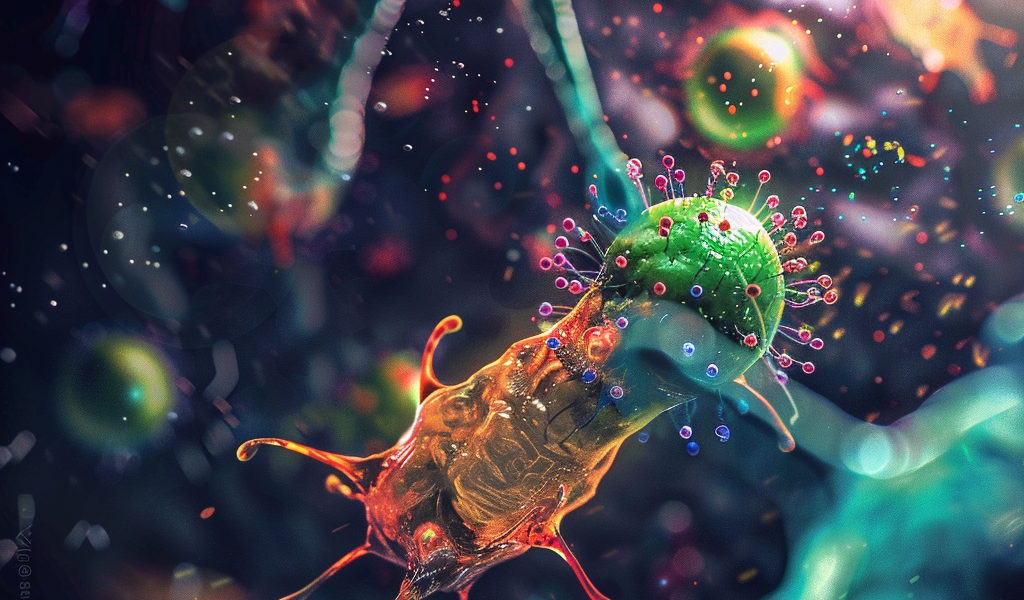Recent research conducted by scientists from the University of Illinois Urbana-Champaign and Texas A&M University has unveiled intriguing insights into the interactions between multiple phages—viruses that specifically target bacteria—and their effects on infection processes. This study, which emphasizes the significance of phage biology, was published on August 5, 2024, and represents a significant advancement in understanding how these viruses operate at the cellular level.
Phages have been a subject of scientific inquiry for over 50 years, primarily due to their role in infecting and replicating within bacterial cells. The recent surge in interest surrounding phages can be attributed to their potential applications in ecology, evolution, and biotechnology. Professor Ido Golding, a key researcher in this study, noted, “The field of phage biology has seen an explosion over the last decade because more researchers are realizing the significance of phages in ecology, evolution, and biotechnology. This work is unique because we looked at phage infection at the level of individual bacterial cells.”
The infection process begins when a phage attaches itself to the surface of a bacterium. Following this attachment, the phage injects its genetic material into the bacterial cell. The subsequent fate of the bacterium depends on the number of phages that successfully infect it. A single phage typically causes the bacterium to undergo lysis, resulting in its destruction, while infection by multiple phages can lead to a dormant state known as lysogeny, where the phage’s genetic material integrates into the bacterial genome.
In their study, the researchers sought to determine whether the number of phages binding to a bacterial cell correlates with the quantity of viral genetic material injected into that cell. To investigate this, they employed advanced fluorescent labeling techniques to mark both the protein shell of the phages and their internal genetic material. Using varying concentrations of phages, they cultivated Escherichia coli and meticulously tracked the rate at which these phages managed to inject their genetic material into the bacterial cells.
Golding explained, “We have known since the 70s that when multiple phages infect the same cell, it impacts the outcome of the infection. In this paper, we were able to take precise measurements unlike any study done so far.” This precision allowed the researchers to uncover unexpected findings about the dynamics of phage infection.
One of the most surprising revelations from the study was that the presence of multiple phages could actually hinder the entry of individual phage genetic material into the bacterial cell. The researchers observed that as the number of phages attached to the bacterial surface increased, the efficiency with which they could inject their genetic material decreased. This counterintuitive result suggests that the competition among phages for entry into the cell may play a critical role in determining the outcome of the infection.
This research not only enhances our understanding of phage biology but also opens new avenues for potential applications in treating bacterial infections. As antibiotic resistance continues to pose a significant threat to public health, phage therapy is being explored as a viable alternative. The findings from this study could inform the development of more effective phage-based treatments by providing insights into how phages interact with bacterial cells.
Moreover, the implications of this research extend beyond medical applications. Understanding the dynamics of phage infections can also contribute to advancements in ecological studies, as phages play a crucial role in regulating bacterial populations in various environments. This could have significant effects on nutrient cycling, ecosystem health, and the overall balance of microbial communities.
As scientists continue to explore the complexities of phage biology, this study stands out as a pivotal contribution to the field. The innovative techniques employed by the researchers, combined with their focus on individual bacterial cells, provide a clearer picture of the intricate relationships between phages and their bacterial hosts. Future research will likely build upon these findings, further unraveling the mysteries of phage behavior and their potential applications in various scientific domains.
In summary, the recent study from the University of Illinois Urbana-Champaign and Texas A&M University highlights the intricate dynamics of phage infections and their implications for both health and ecological systems. As researchers delve deeper into the world of phages, we can anticipate exciting developments that may reshape our understanding of microbial interactions and lead to innovative solutions in combating bacterial infections.





